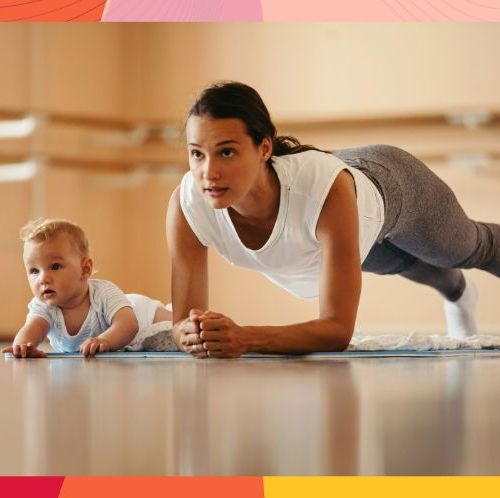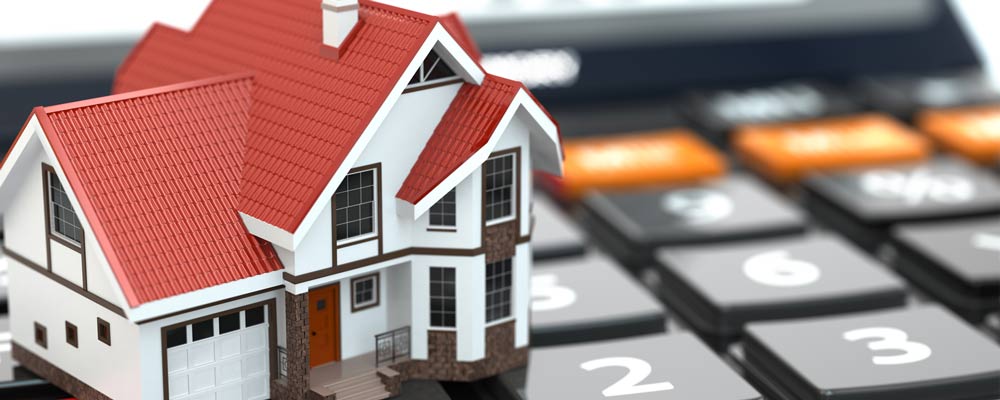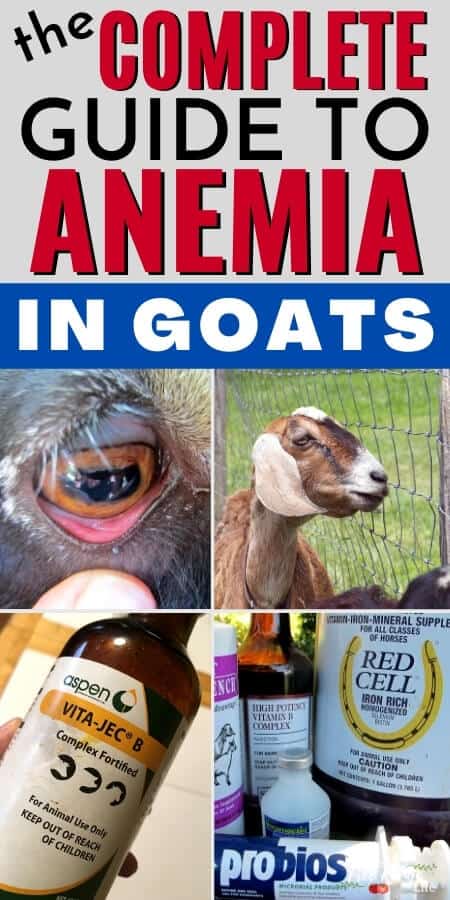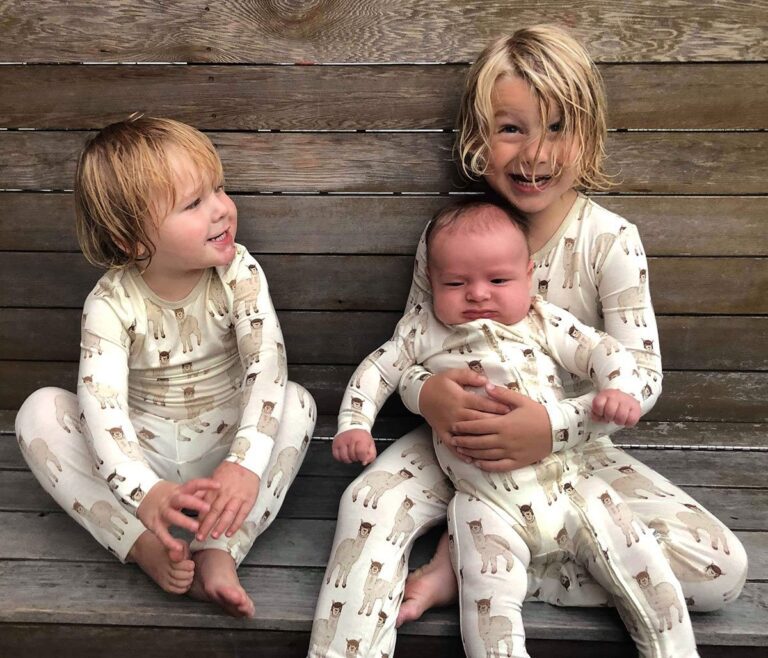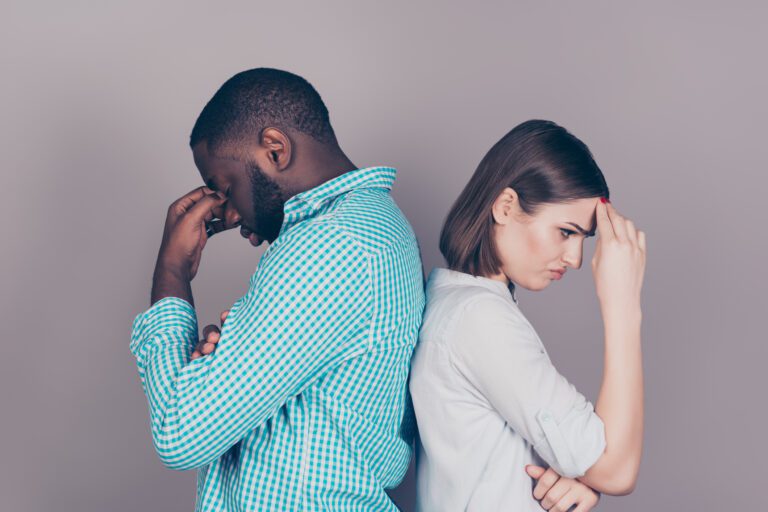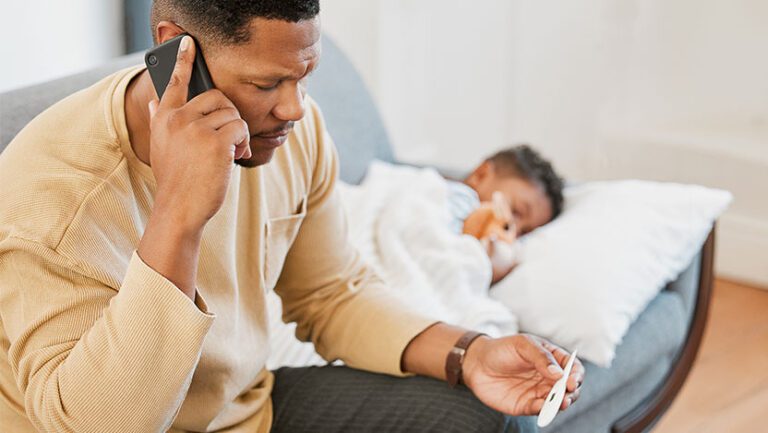How to Hide Postpartum Baby Hairs: Expert Tips & Tricks
To hide postpartum baby hairs, you can try hairstyles that conceal the hair loss, such as the donut bun or using headbands, scarves, and bandanas. These styling techniques are effective in disguising postpartum hair loss and are budget-friendly alternatives to salon treatments.
Additionally, you can use hair products like root coverup powder or natural hair oil to add volume and cover any sparse areas. Postpartum hair loss is a common condition that typically occurs about three months after childbirth and can last up to six months.
However, with time, your hair will regrow and return to its original fullness.
Understanding Postpartum Baby Hairs
Learn the best ways to hide postpartum baby hairs with stylish headbands, scarves, and more. These fun accessories can help disguise hair loss and take the pressure off your wallet, without sacrificing style. Say goodbye to postpartum hair woes and hello to confident, fashionable looks.
Definition And Causes Of Postpartum Baby Hairs
Understanding postpartum baby hairs is essential for new mothers who may be experiencing changes in their hair growth after giving birth. Baby hairs are those small, wispy hairs that typically grow around the hairline and temples. These hairs are shorter and finer than the rest of your hair and can sometimes be difficult to manage or hide.
The causes of postpartum baby hairs can be attributed to hormonal changes that occur during pregnancy. During pregnancy, a woman’s body experiences a surge in hormones, which can lead to an increase in hair growth. This growth phase is often referred to as the “resting phase,” as the hormones prolong the growth phase of hair follicles, resulting in thicker and fuller hair.
However, once the baby is born and hormone levels begin to return to normal, many women experience a shedding phase known as postpartum hair loss. This shedding phase can cause baby hairs to emerge as the hair follicles transition from the resting phase to the shedding phase. The emergence of these baby hairs is a natural part of the hair growth cycle.
The Impact Of Hormonal Changes On Hair Growth
Hormonal changes play a significant role in hair growth during pregnancy and postpartum. The surge in hormones can cause hair follicles to remain in the growth phase for a longer period, resulting in thicker and fuller hair. However, once hormone levels begin to regulate after childbirth, the hair follicles enter the shedding phase, leading to the emergence of baby hairs.
It’s important to note that postpartum hair loss and the growth of baby hairs are temporary conditions. In most cases, hair growth will return to its pre-pregnancy state within a few months. However, during this transition phase, it can be challenging to manage and hide baby hairs as they may appear uneven or stick out.
To successfully navigate this phase, it’s crucial to understand how hormonal changes impact hair growth and find strategies to style and conceal baby hairs. With the right techniques and products, new mothers can confidently manage their postpartum baby hairs and embrace this temporary phase of their hair journey.
Prepping The Hair For Styling
When it comes to hiding postpartum baby hairs, one of the key steps is prepping the hair for styling. This involves using the right techniques for washing and conditioning, as well as choosing the appropriate styling products that will help you achieve the desired look. In this section, we will explore the best washing and conditioning techniques for postpartum hair and how to select the right products for styling baby hairs.
Washing And Conditioning Techniques For Postpartum Hair
Properly washing and conditioning your postpartum hair is crucial in the prepping stage. Here are some techniques to follow:
- Use a sulfate-free shampoo to gently cleanse the hair, without stripping it of its natural moisture.
- Massage the scalp with the shampoo using circular motions to stimulate blood flow, which can promote hair growth.
- Rinse the shampoo thoroughly, making sure there are no leftover residues.
- Apply a hydrating conditioner from mid-length to the ends of your hair, focusing on the baby hair areas.
- Leave the conditioner on for a few minutes before rinsing it off completely.
- For added hydration, consider incorporating a leave-in conditioner or hair mask into your routine once or twice a week.
Choosing The Right Products For Styling Baby Hairs
The right styling products can make a significant difference in hiding postpartum baby hairs. Here’s what to consider:
- Opt for a styling gel or cream that provides a medium hold without leaving the hair feeling sticky or weighed down.
- Look for products specifically designed for flyaway hairs or frizz control, as these can effectively tame the baby hairs.
- Prioritize products that offer heat protection if you plan to use styling tools, such as a flat iron or curling wand, to further style your hair.
- Consider using a styling brush with fine bristles or a toothbrush dedicated to taming baby hairs, as these allow for precise control.
- Remember to start with a small amount of product and gradually add more if needed, as a little goes a long way when styling baby hairs.
By following these washing and conditioning techniques and selecting the right products, you can effectively prep your hair for styling and achieve a smooth, polished look while hiding those postpartum baby hairs.
Styling Techniques To Hide Baby Hairs
Postpartum baby hairs can be frustrating to deal with, but luckily there are styling techniques that can help you hide them and achieve a sleek look. Here are some effective methods to consider:
Using A Wide-tooth Comb For Gentle Detangling
To tame your baby hairs without causing breakage or damage, opt for a wide-tooth comb. This type of comb is designed to glide through your hair easily, minimizing any pulling or tugging. Start by combing your hair gently from roots to ends, focusing on smoothing down the baby hairs.
Incorporating A Styling Concentrator For Precision
A styling concentrator attachment for your hairdryer can be a game-changer when it comes to hiding baby hairs. This attachment focuses the airflow in a concentrated manner, making it easier to target and smooth down those stubborn flyaways. Simply aim the concentrator at your roots and use a brush or comb to guide your baby hairs in the desired direction.
Applying Products Before Styling To Control Baby Hairs
Prior to styling your hair, apply a small amount of styling product such as a smoothing serum or cream to control your baby hairs. These products help to add moisture and reduce frizz, making it easier to style your hair and keep the baby hairs in place. Work the product through your hair, paying extra attention to the areas where you have baby hairs.
Utilizing Flat Clips To Tame Flyaways
If you have particularly unruly baby hairs, flat clips can be a lifesaver. Separate your baby hairs from the rest of your hair and use the clips to hold them down. This technique gives your baby hairs time to dry in the desired position, resulting in a sleek and polished look. Remember to remove the clips once your hair is dry for a natural finish.
Exploring The Flyaway Attachment For Stubborn Baby Hairs
For those stubborn baby hairs that just won’t stay put, a flyaway attachment can be a handy tool. This attachment is specifically designed to tame and smooth down flyaways, allowing you to achieve a sleek and polished look. Simply attach it to your hairdryer and use it to target the baby hairs, smoothing them down in the desired direction.
By incorporating these styling techniques into your haircare routine, you can effectively hide postpartum baby hairs and achieve a sleek, polished look.
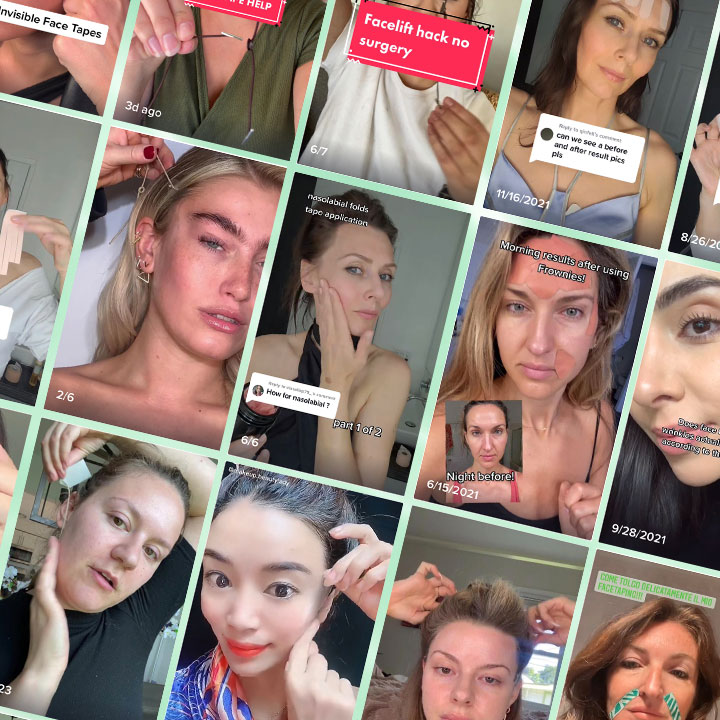
Credit: www.shefinds.com
Long-term Solutions For Postpartum Hair Loss
Postpartum hair loss can be a frustrating experience for new moms. It’s a common condition that occurs after childbirth due to hormonal changes in the body. Understanding the causes and regrowth process is essential in finding effective long-term solutions. In this post, we will discuss expert advice, recommended vitamins and supplements, root cover-up products, natural hair oil, and keratin treatments for managing postpartum baby hairs.
Understanding Postpartum Hair Loss And Regrowth
Postpartum hair loss occurs when the high levels of estrogen during pregnancy suddenly drop after giving birth. This hormonal shift can cause an excessive shedding of hair, which can be distressing for many new moms. The good news is that postpartum hair loss is usually temporary, and regrowth occurs naturally over time.
Expert Advice On Dealing With Postpartum Hair Loss
Dealing with postpartum hair loss requires patience and a positive mindset. According to hair experts, it’s essential to avoid harsh styling techniques and harsh chemical treatments during this period. Instead, embrace gentle hair care practices, such as using a wide-tooth comb to detangle hair and minimizing heat styling.
Recommended Vitamins And Supplements For Hair Growth
Taking vitamins and supplements specifically formulated for hair growth can help promote the regrowth of postpartum baby hairs. Some key nutrients to look for include biotin, vitamin E, vitamin C, and iron. These nutrients support healthy hair follicles and strengthen the overall hair structure.
Using Root Cover-up Products To Conceal Regrowth
To hide postpartum regrowth and baby hairs, you can rely on root cover-up products. These products come in various forms like powders, sprays, or pencils. They are designed to match your hair color and provide temporary coverage to conceal regrowth until your hair grows back to its full length.
Benefits Of Natural Hair Oil For Postpartum Hair Care
Natural hair oils, such as argan oil or coconut oil, can be beneficial for postpartum hair care. These oils help to moisturize the scalp, nourish the hair follicles, and promote healthy hair growth. Massaging a few drops of oil onto the scalp regularly can improve blood circulation and strengthen the roots.
Expert Tips On Keratin Treatments For Managing Baby Hairs
Keratin treatments can be an effective way to manage postpartum baby hairs. These treatments help to smooth out frizz and flyaways, making the hair more manageable. It’s important to consult with a hair expert before getting a keratin treatment to ensure it is safe and suitable for your postpartum hair.
Additional Tips For Managing Baby Hairs
When it comes to dealing with postpartum baby hairs, there are a few additional tips that can help you manage them effectively. From speeding up hair growth with natural remedies to proper scalp care and recommendations for the best shampoos for dry postpartum hair, these tips will surely make a difference in your hair care routine.
Speeding Up Hair Growth With Natural Remedies
If you’re looking to encourage hair growth and minimize the appearance of those pesky baby hairs, there are natural remedies you can try. These remedies can help stimulate hair follicles and promote healthier, faster hair growth.
- Massage your scalp with essential oils such as peppermint, rosemary, or lavender. These oils have been known to improve blood circulation and promote hair growth.
- Try using castor oil as a hair mask. It is rich in vitamins and fatty acids that can nourish your scalp and strengthen your hair.
- Incorporate biotin-rich foods into your diet, such as eggs, nuts, and leafy greens. Biotin is a B-vitamin that plays a crucial role in hair growth.
Proper Scalp Care For Postpartum Hair Health
Taking care of your scalp is essential for maintaining the health of your postpartum hair. By following these scalp care tips, you can ensure that your hair grows strong and healthy.
- Keep your scalp clean by washing it regularly with a gentle shampoo. Avoid using harsh chemicals or sulfates that can strip away natural oils.
- Exfoliate your scalp once a week to remove any buildup of dead skin cells. This can help improve blood circulation and promote healthier hair growth.
- Use a deep conditioning treatment once a week to nourish and moisturize your scalp. Look for products that contain natural ingredients like aloe vera or coconut oil.
Recommendations For The Best Shampoos For Dry Postpartum Hair
Dry postpartum hair can be a common concern for new mothers. To address this issue, it’s important to choose the right shampoo that can hydrate and nourish your hair.
| Shampoo Brand | Description |
|---|---|
| Mielle Rosemary Mint Strengthening Shampoo | A natural shampoo that is gentle on the scalp and helps strengthen hair strands. |
| Virtue Recovery Shampoo | An advanced formula that repairs and restores dry, damaged hair. |
| Briogeo Don’t Despair, Repair! Super Moisture Shampoo | A hydrating shampoo that replenishes moisture and promotes healthier hair. |
| Pura D’or Advanced Therapy Shampoo | A natural shampoo that nourishes and revitalizes dry, damaged hair. |
| Honeydew Biotin Shampoo | A biotin-infused shampoo that strengthens and fortifies hair, preventing breakage. |
Frequently Asked Questions Of How To Hide Postpartum Baby Hairs
What To Do With Baby Hair After Birth?
To hide postpartum baby hairs after birth, you can try these simple tricks: 1. Apply coconut oil 2. Brush your baby’s scalp 3. Shampoo regularly 4. Use a hair conditioner 5. Use a soft towel 6. Detangle hair 7. Maintain a healthy diet.
How Can I Hide My Postpartum Hair Loss?
To hide postpartum hair loss, try using headbands, scarves, bandanas, or even wigs for a stylish disguise. These options are affordable and convenient, perfect for new parents with little time for hair care. Postpartum hair loss is temporary and typically lasts up to six months after childbirth.
So, don’t worry, your hair will grow back to its fullness soon. Create a thick, voluminous look with a donut bun hairstyle by rolling your hair through a sock without the holes.
How Long Does It Take For Postpartum Baby Hairs To Grow Out?
Postpartum baby hairs usually take about three to six months to grow out. It’s a normal part of pregnancy and is temporary.
What Hairstyles Hide Postpartum Hair Loss?
The donut bun is a great hairstyle that hides postpartum hair loss. Tie your hair into a ponytail, roll it through a “donut” made from a sock, and create a full bun. It conceals hair loss and adds thickness and volume to your hair.
Conclusion
To hide postpartum baby hairs, there are several simple tricks you can try. Headbands, scarves, and bandanas can be stylish accessories that also conceal hair loss. Additionally, using a wig is a fun and affordable way to disguise baby hairs.
By incorporating these tips into your hair care routine, you can feel confident and beautiful as you navigate postpartum hair loss. Remember, this is a temporary condition, and with time, your hair will grow back to its original fullness.
